A low-growing variety for novice summer residents - “Mongolian Dwarf” tomato: description of the variety and reviews of its cultivation
What associations does the name Mongolian dwarf tomato evoke in you? Surely, a short, stocky bush appears before your eyes, sitting firmly in the ground. The name accurately characterizes this variety of tomatoes. He is strong and not at all afraid of changeable weather. Let's look at the characteristics of the variety and find out what tomato growers think about it.
Characteristics and description of the variety
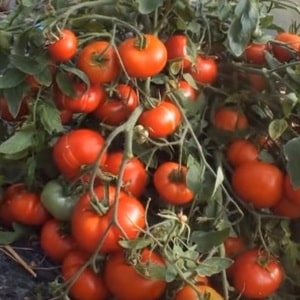 The Mongolian dwarf tomato variety was bred by breeding scientists from Novosibirsk. These are ultra-short plants - their height does not exceed 30 cm. An early variety - 90-100 days pass from germination to the first fruits.
The Mongolian dwarf tomato variety was bred by breeding scientists from Novosibirsk. These are ultra-short plants - their height does not exceed 30 cm. An early variety - 90-100 days pass from germination to the first fruits.
Plants have a special bush shape: as soon as the stem grows to a height of 25-30 cm, its top begins to twist downward, and stepsons form in the axils of the stem, which also grow downward. The stepsons, like the tentacles of an octopus, spread out to the sides. As a result, the bush grows in width up to 0.7-100 cm. At the same time, the foliage becomes denser. Fruits grow among a dense layer of green leaves. Look at the photo to see how many of them grow on the bush.
Plants are cold-resistant, grow well in short summers and temperature fluctuations. If the seeds are sown in early February, the first fruits are harvested in June. At the usual sowing time (in March), tomato bushes bear fruit from July to September.
Fruits and yield
The fruits on the bush grow heavy - up to 150-200 g (the first tomatoes can reach 300 g). The shape is round, angular-ribbed, fleshy.There are legends about the productivity of this variety, because tomatoes grow on all shoots and in every leaf axil. Those who grew the Mongolian dwarf say that they removed up to 10 kg of tomatoes from the bush.
Because of tomatoes grow inside a dense layer of leaves, they are less susceptible to pests. The fruits have a thick skin, so they are easily transported.
Tomatoes of this variety have few taste characteristics. Standard tomato taste. But this is a positive characteristic for a tomato with early fruiting, since usually early tomatoes are often tasteless. If the summer is warm, sweetness predominates in the fruits; if it is cold, sourness prevails.
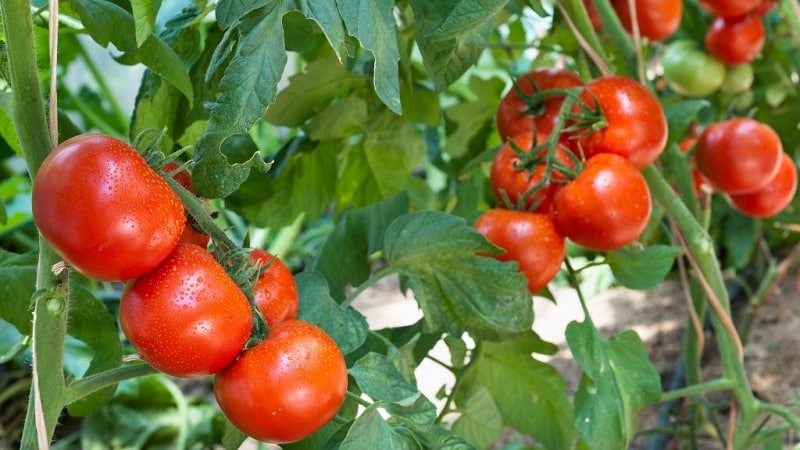
Read also:
Unusual tomato “Black bunch f1”
“Heavyweight of Siberia”: persistent, early ripening and high-yielding variety
How to grow seedlings
Let's consider all stages of cultivation in order. seedlings.
Sowing seeds
Mongolian dwarf tomato seeds are not sold in gardening stores, where there are products from famous manufacturers. The variety is not in the State Register either. Seeds can only be purchased in online stores and from private sellers. The cost starts from 80 rubles for 8 seeds.
It is better to buy soil in a specialized store. This reduces the risk of contracting diseases and pests. If it is not possible to buy land, and planting is planned in garden soil, it is recommended to carry out disinfection. For example, bake the soil on a baking sheet in the oven at 95 degrees for 30 minutes.
Note! There is an opinion that when the soil is heated, beneficial bacteria are also destroyed along with diseases and pests.
Any available containers are suitable for planting: plastic cups, peat pots, wooden boxes, etc.The seeding depth is 1-1.5 cm. It is better to cover the container with film and place it in a warm, dark place. When shoots appear, the film is removed and the container is transferred to the windowsill, towards the light.
According to reviews from those who have already planted tomatoes of this variety, seed germination is close to 50%, and occurs within 7-10 days from the day of sowing (this is longer than usual).
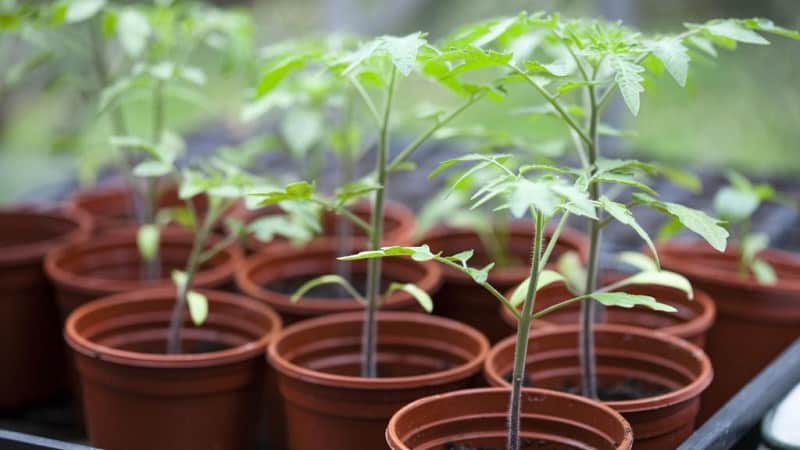
Seedling care
Water the young sprouts with settled water at room temperature.. This is done as the soil dries out.
Young shoots of this variety have a peculiarity: they grow very slowly. As a general rule, it is recommended to pick seedlings of other tomato varieties in the phase of 2-3 leaves. With regard to the Mongolian dwarf, the general approach is not used: if the sprouts have reached a height of up to 10 cm, but do not touch each other with leaves (and by this time there will be 6 to 8 of them), there is no need to plant the sprouts in separate containers.
Two weeks before planting in the main place, the seedlings begin to harden. First, leave it under an open window for 1-2 hours. A few days later they take him out onto the loggia for several hours. After a few more days, they leave it there for the whole day (they bring it indoors at night). After 1-2 days of habituation, they begin to take them out into the open air.
Landing in a permanent place
Mongolian dwarf is best grown in open ground. Those who grew tomatoes of this variety in a greenhouse noted that high temperatures cause the tomato to “burn” and shed its flowers.
It is recommended to choose a sunny place for the Mongolian dwarf. For planting, holes are made at a distance of 50 cm between plants in a row and 50 cm between rows. When planting, add 2 tablespoons of ash to each hole. After planting the seedlings, the plants are watered at the rate of 1 liter per bush.
About other varieties of tomatoes:
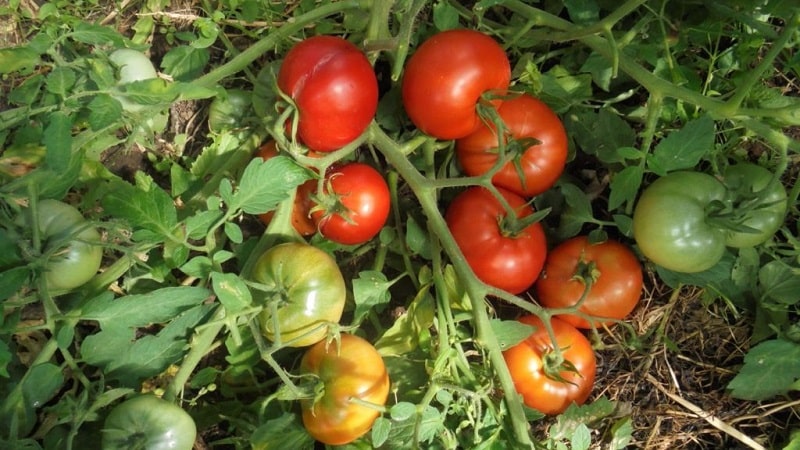
Features of care
Mongolian dwarf tomato is easy to care for. Plants do not need tying to supports or pinching - each shoot from the stem forms new clusters on which fruits grow. A garter is not only not necessary, but also undesirable. After all, a creeping bush feels good precisely at the soil level.
There is also no need to form a bush. It does not grow upward, like medium-sized and tall tomatoes, but to the sides. The stem of the plant is strong, capable of supporting the weight of growing fruits. Due to their short stature, the plants are stable even in strong gusts of wind.
Due to its unpretentiousness and low maintenance requirements, this variety is often chosen by novice summer residents.who want to get a tomato harvest with minimal effort. But easier care does not mean its absence. Tomatoes of the Mongolian dwarf variety need to be watered and fed, and the soil under the plants should be mulched. For both open ground and greenhouse cultivation, care recommendations are similar.
Mulching the soil
Tomatoes are very low-growing, and the growing fruits are located close to the surface of the ground. To prevent pests (for example, slugs) from feasting on the fruits, the soil must be mulched after planting the seedlings in the main place. Suitable for these purposes:
- hay;
- straw;
- sawdust;
- coniferous branches;
- crumpled newspapers;
- cardboard egg trays;
- boards;
- dense spunbond or other covering material.
It is advisable to loosen the soil around the plant root under the mulch once a week. This is necessary so that additional oxygen reaches the roots.
Mulching is the only difficulty that tomato growers face when growing Mongolian dwarf. Otherwise, the variety does not cause much trouble.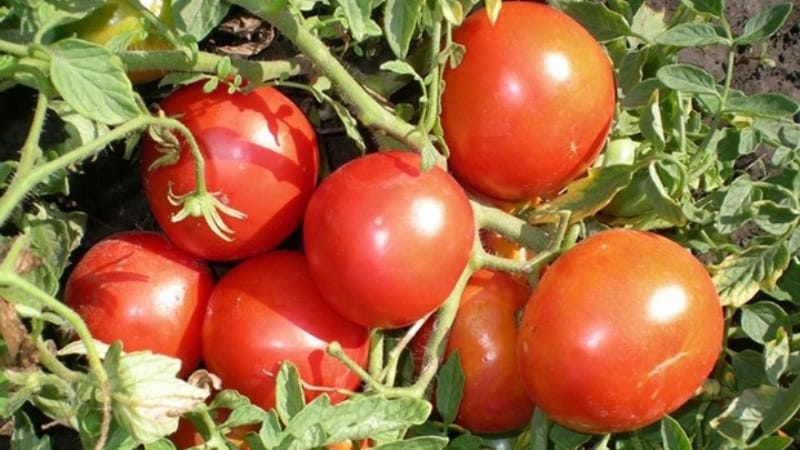
Watering
In order for the plants to produce a decent harvest, the bushes need to be watered 1-2 times a week., depending on the weather. Water consumption – 3-5 liters per bush. In wet weather, watering is reduced to once every 5-7 days.
Feeding
The Mongolian dwarf responds well to boron-ash-iodine supplements along the leaf and under the root.
To prepare the fertilizer, 10 g of boric acid is diluted in a glass of hot (from 70 degrees) water. Then the contents of the glass are mixed with 10 liters of water and 1 liter of ash. After mixing, add 15-20 drops of alcohol tincture of iodine. The resulting solution is sprinkled on the leaves or watered at the root at the rate of 0.5 liters of fertilizer for the bush.
Attention! Fertilizing is carried out either in dry, cloudy weather, or late in the evening, after sunset. This is necessary to prevent the plants from getting sunburn.
Diseases and pests
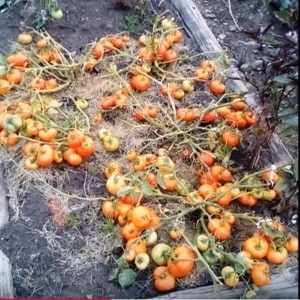 If the leaves begin to turn yellow, it is better to tear them off. After all, such leaves are a source of late blight. Most gardeners completely trim off the leaves on their plants to protect them from this disease.
If the leaves begin to turn yellow, it is better to tear them off. After all, such leaves are a source of late blight. Most gardeners completely trim off the leaves on their plants to protect them from this disease.
The photo shows what the bush looks like without foliage.
Other diseases rarely affect the variety due to early fruit ripening.
To protect against pests, experienced gardeners advise planting calendula and marigolds next to tomato bushes.. Their bright scent repels unwanted insects. Garlic sprays also protect against pests. The tincture is prepared from 200 g of garlic and 2-3 liters of water. The mixture is infused for 5-6 hours, and then sprayed onto the leaves from a spray bottle.
Recommendations for harvesting and using fruits
During the fruiting period, it is advisable to reduce watering to avoid cracking of the tomatoes.. The fruits are harvested when they turn red. It is allowed to collect brown tomatoes. Then they are placed in a warm, bright place, where they reach full ripeness.
Tomatoes are fleshy and are eaten fresh. (especially considering their early ripening). The fruits are also suitable for processing for the winter - they are suitable for lecho, juices, pastes and ketchups. Many housewives freeze tomatoes by cutting them into slices or mugs, and then use them in preparing meat dishes or pizza.
Advantages and disadvantages of the variety
Among the advantages of the Mongolian dwarf variety:
- undemanding to care (no need to tie it up, form a bush or stepchild);
- resistance to temperature changes without reducing yield;
- plants of this variety rarely suffer from late blight;
- long fruiting period (until autumn frosts).
Wherein gardeners also note the disadvantages of the variety:
- the fruits crack;
- mulching of the soil under the plants is required.
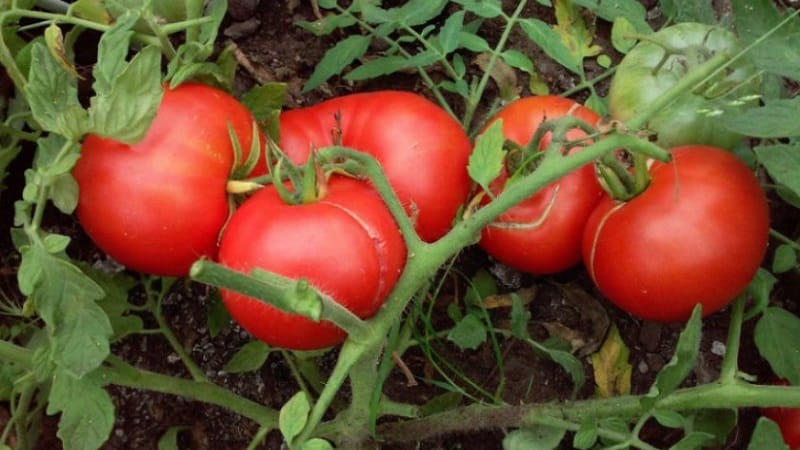
Reviews
Gardeners have contradictory opinions about the Mongolian dwarf variety. Some are pleased with the results of its cultivation, others expected more.
Valentina Anatolyevna, 58 years old: “In the spring of 2018, I planted Mongolian dwarf seeds in open ground. It didn't impress me with its taste. In addition, you need to put something under the fruits, otherwise they lie on the ground and spoil. But the neighbors asked for a couple of overripe tomatoes to remove the seeds; they liked the variety.”.
Grigory Vyazmensky, 50 years old: “I have never received such a harvest from any dwarf variety. It was not in vain that I bought these exotic seeds on the market after hearing a lot of positive reviews. I planted two bushes per square meter of land.I took an eight-liter bucket of tomatoes from each of them. I recommend it to everyone!”.
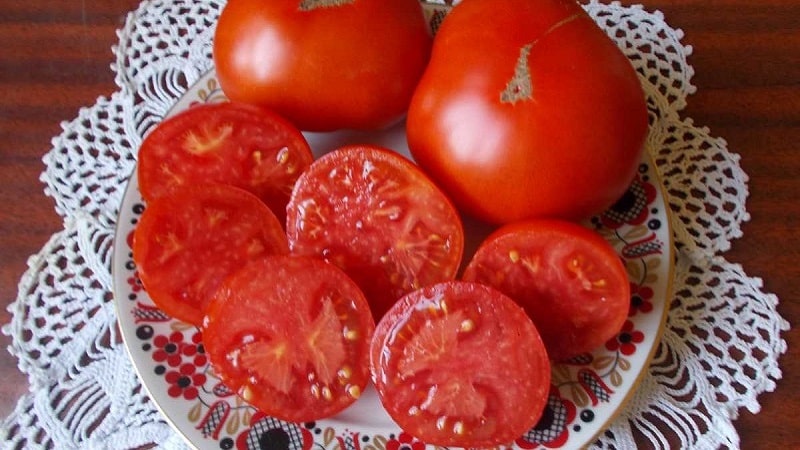
Antonina Petrovna, 49 years old: “If you are going to buy seeds, do not postpone this event until February, like I did, otherwise you risk being left without a purchase. The seeds are rare and sell out quickly. I just had time to order it by mail from a private seller. But my experiment was unsuccessful: out of eight seeds, only two sprouts sprouted. The tomatoes grew in open ground, but they didn’t like the taste – they were sour. I won’t plant them anymore.”.
Let's sum it up
The Mongolian dwarf tomato variety is resistant to low temperatures and is unpretentious in care (it does not need to be tied up, pinched or formed into a bush). The yield is encouraging: some gardeners boast that they remove more than a bucket of tomatoes from a bush.
The Mongolian dwarf bears fruit best in open ground. Ideal for growing in short summer conditions in the Urals and Siberia. Inexperienced summer residents can also easily master the care of this tomato - it is minimal.
When growing tomatoes of this variety, it is important to follow 3 rules: grow in open ground, do not tie them up, do not plant them. If you follow them, you can get 8-10 kg of harvest from one bush.